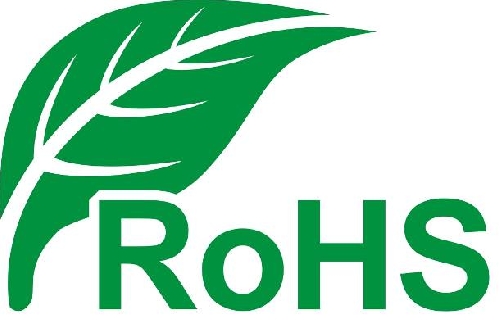
RoHs
RoHS is a mandatory standard developed by the EU legislation, its full name is "on the restrictions on the use of electrical and electronic equipment in the use of certain harmful ingredients" (Restriction of Hazardous Substances). The standard was officially implemented on July 1, 2006, mainly used to regulate the electrical and electronic products, materials and process standards, making it more conducive to human health and environmental protection. The purpose of this standard is to eliminate lead, mercury, cadmium, hexavalent chromium, polybrominated biphenyls and polybrominated diphenyl ethers in electrical and electronic products (note: PBDE correct Chinese name refers to polybrominated diphenyl ethers, polybrominated diphenyl ethers are wrong ) A total of 6 substances, and focus on the provisions of the lead content can not exceed 0.1%.
European Directive
(ROHS Directive) 2011/65 / EU
European RoHS 2011/65 / EU requirements of the test items for the six, the directive for the ROHS directive.
RoHS (Pb), cadmium (Cd), mercury (Hg), hexavalent chromium (Cr), polybrominated biphenyls (PBBs) and polybrominated diphenyl ethers (PBDEs).
About HBCD, BBP, DBP, DEHP and other items This directive only refers to whether the follow-up priority assessment is included in the control, did not force the manufacturer to carry out testing.
Fold this command
The European Parliament and the European Commission on February 13, 2003 in its "Official Gazette" issued a "Waste Electrical and Electronic Equipment Directive" (referred to as "WEEE Directive") and "Electrical and Electronic Equipment Restriction on the Use of Certain Hazardous Substances Directive" Referred to as the "RoHS Directive")
"RoHS Directive" and "WEEE Directive" provisions of the restrictions on the management of hazardous substances and waste recycling management of the top ten categories of 102 kinds of products, the first seven categories of products are China's major export electrical products. Including large household appliances, small household appliances, information and communication equipment, consumer products, lighting equipment, electrical and electronic tools, toys, leisure and sports equipment, medical equipment (except implanted or infected products), monitoring and control equipment ,vending machine.
On December 3, 2008, the EU issued a revised proposal for the WEEE Directive (2002/96 / EC) and the RoHS Directive (2002/95 / EC). The purpose of this proposal is to create a better regulatory environment, that is, simple, easy to understand, effective and enforceable regulations. RoHS amendments to the main contents are:
1. changed the legal terms to clarify the scope and definition of the directive;
2. Introduce the CE mark of the product and the EC declaration of conformity;
3. Stages the inclusion of medical devices, controls and monitoring instruments in the RoHS directive;
(HBCDD), phthalic acid (2-ethylhexyl ester) (DEHP), butylbenzyl phthalate (BBP), the six substances are not changed, ) And dibutyl phthalate (DBP) - require a priority assessment in order to examine whether future inclusion of restricted substances
RoHS range:
Only for the July 1, 2006 on the market from the new products.
Including household incandescent and light sources.
Should not violate special special instructions or regulations regarding safety and health requirements - Wihicle ELV, vehicle directive; battery instructions, 91/157 / EEC, 93/86 / EEC & 98/101 / EC
Excludes: medical equipment or monitoring equipment (WEEE Directive Nos. 8 and 9); spare parts for the market before July 1, 2006; reusable products that were previously put on the market before July 1, 2006.
Restricted Toxic Substances:
· Heavy metals:
European New RoHS Certificate (RoHS2.0)
-Lead lead
Mercury Mercury;
Cadmium cadmium
-Chromium (VI) hexavalent chromium.
· Some brominated flame retardants:
Polybrominated biphenyls (PBB's);
Polybrominated diphenyl ethers (PBDE's).
The ceiling is:
Cadmium: 0.01% (100 ppm);
Lead, Mercury, Hexavalent Chromium, Polybrominated Biphenyl, PBDE: 0.1% (1000ppm).
Six types of hazardous substances
RoHS for all production processes and raw materials may contain the above six kinds of hazardous substances in electrical and electronic products, including: white appliances, such as refrigerators, washing machines, microwave ovens, air conditioners, vacuum cleaners, water heaters, black appliances, such as audio, video products , DVD, CD, TV receivers, IT products, digital products, communications products, etc .; power tools, electric electronic toys, medical electrical equipment.
1. Lead (Pb) Examples of materials used: solder, glass, PVC stabilizer
2. Mercury (Hg) (mercury) Examples of the use of this substance: Thermostats, sensors, switches and relays, bulbs
3. Cadmium (Cd <gé>) Examples of the use of this substance: switches, springs, connectors, enclosures and PCBs, contacts, batteries
4. Examples of hexavalent chromium (Cr 6+ <gè>) using this material: metal corrosion-resistant coating
5. Examples of polybrominated biphenyls (PBB) using this substance: flame retardants, PCBs, connectors, plastic housings
6. Examples of polybrominated diphenyl ethers (PBDE) using this material: flame retardants, PCBs, connectors, plastic housings